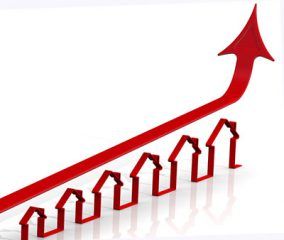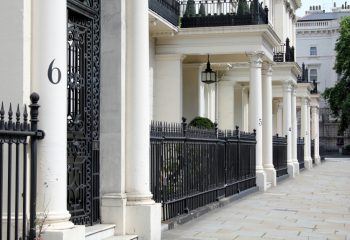House Prices in 9 London Boroughs Soar by over 500% in 2 Decades
House prices in nine London boroughs have soared by over 500% in the past two decades, according to a new study by Halifax.

House Prices in 9 London Boroughs Soar by over 500% in 2 Decades
New transport links, rising housing demand and a lack of affordable supply mean that today’s aspiring homebuyers are facing prices up to eight times higher than they were 20 years ago, the research shows.
Halifax has uncovered the ten areas in the UK where house prices per square metre have risen the most since 1997. Nine of these locations are unsurprisingly in the capital.
In the east London borough of Hackney, the findings show that the average square metre price has leapt from £814 in 1997 to £6,942 this year – a huge increase of 753% in two decades. This has pushed the average cost of buying a home in the borough above half a million pounds, at £526,835. This growth is almost twice the 402% seen in Greater London over the same period.
Newham, also in east London, has recorded the second greatest increase, with average prices up by 676% in the last 20 years, followed by Southwark (644%) and Lewisham (618%).
The northeast borough of Waltham Forest saw the biggest recent price growth, with average values surging by 93% to £447,979 in the past five years alone.
The report, which compares house prices in 32 London boroughs and more than 300 towns across the country, measures house price growth in each area by dividing the average property value by the average square metre measurement of every home, excluding outside space.
The Managing Director of Halifax, Russell Galley, explains: “House price per square metre can be a useful measure for house price comparison, as it helps to adjust for differences in the size and type of properties between locations.”
Hove is the only area outside of Greater London to make the top ten list. Outside southern England, just 12 towns have recorded price gains in excess of the national average since 1997.
“Unsurprisingly, there are parts of central London that are substantially more expensive than anywhere else in the country,” says Galley. “Over the last 20 years, the gap between southern England, particularly London, and the rest of the country has increased substantially — a trend that has continued during the last five years.”
While double-digit growth has sent house prices spiralling in recent years, a gradual slowdown is being seen across London and the UK following a year of political and economic uncertainty. Wage increases have failed to keep up with house price growth over the last five years, so it’s no surprise that buyers have hit a price ceiling.
The latest House Price Index from Nationwide shows that the average house price hit £211,671 in July – up by 0.3% on June’s figure and 2.9% on July last year.
Do you believe that house prices can continue rising at this rate? Regardless, the latest findings from Halifax show that it’s great news for anyone who invested in London over the past 20 years!











